Upliance 2.0 Review: A practical kitchen tool for busy cooks
Rating: 3.5/5
Modern life presents a genuine cooking problem, at least for some. Busy professionals struggle to prepare meals beyond basic options; people without cooking experience hesitate to attempt restaurant-quality dishes, uncertain about technique and timing while many avoid cooking altogether because the learning curve feels steep and the risk of failure feels high. In such situations, ordering food becomes the default option which comes with its own financial and health ‘problems’.
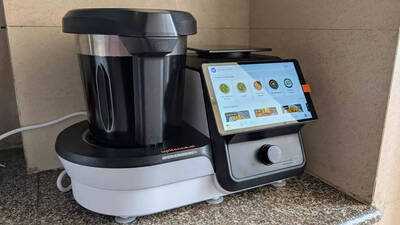
The Upliance 2.0 addresses this gap directly. It's designed for people who want to cook daily food or typically found in restaurants—biryani, paneer curries, pasta risotto, pav bhaji—without the years of practice those dishes traditionally require. It also removes the expertise barrier, handles the technical complexity, and is claimed to produce results that approximate what trained cooks achieve.
However, after testing this AI-assisted cooking device through various recipes, the reality is a bit more nuanced than the marketing suggests. Here’s what we found.
Design and setup
From a design perspective, the Upliance 2.0 makes a strong first impression. The device is sleek and minimal, occupying reasonable counter space without dominating the kitchen. The 10-inch touchscreen is responsive and bright, and the overall aesthetic feels intentional rather than cluttered.
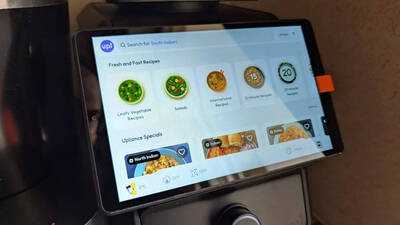
The design is not only functional but also innovative. The blender serves multiple purposes: It’s a chopper with heating and automation capabilities. The setup is straightforward—the touchscreen guides you through initial configuration. The device connects to WiFi for recipe downloads and app-based controls.
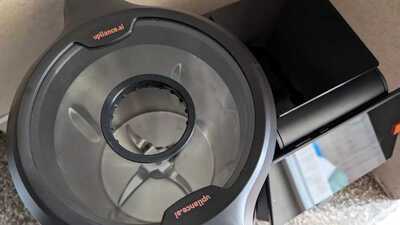
The Upliance 2.0's primary strength lies in its guided cooking system. Recipes adjust automatically for portion size that you set (one or four people). The device handles several key cooking functions: fast heating, automatic stirring, integrated blending and chopping capabilities. You load ingredients, and the device manages timing and temperature adjustments.
Performance
We tested the machine by making multiple recipes, including making coffee, maggi and a paneer dish. The machine also has a scale that is responsive and sophisticated. For example, we were able to measure 9 grams of coffee powder for 2 cups of coffee.
The system acts as a virtual teacher, precisely detailing the required quantities of ingredients like onions, capsicum, cheese, and cheese slices, necessary for the cheese maggi. It then guided us in a step-by-step process, guaranteeing all necessary components are included. We could find hundreds of dishes and their variants on the device and can even add some via app.
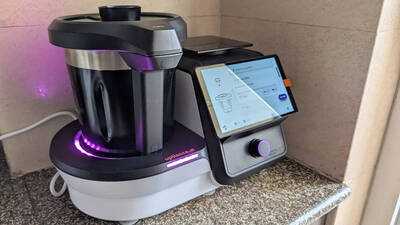
The automatic functions genuinely do reduce active involvement. Traditional cooking often requires constant monitoring—stirring to prevent burning, checking doneness, adjusting heat. Fine chopping of onions, stirring and heating are all taken care of.
The food tasted like actual food prepared by someone with basic competence. It did not feel like a meal prepared by an algorithm or just merely edible approximation. The reviewer’s father tasted the coffee and felt it was a bit too sweet for him. Similarly, the reviewer’s brother did not find the maggi spicy enough for his liking.
Hence, the device also doesn't fully replicate high-flame cooking's flavour profile. We are not saying that the flavour is not good, but it's noticeably different from traditional cooking methods.
Real-world limitations
Food sticking to the bottom of the jar is an issue with some dishes. The rinse cycle helps but doesn't clean it like we do with hands or dishwashers, which means manual scraping is often necessary. More fundamentally, the Upliance 2.0 is not a kitchen replacement. It functions as a specialised cooking vessel—roughly equivalent to a pressure cooker or traditional kadhai—rather than a standalone solution.
For example, we cannot make rotis using only this device or reheat food effectively. It only makes food for up to 4 people, which is a limitation. Sometimes, a dish needs heat techniques that require traditional stovetop cooking, which the device cannot do. Anyone expecting this device to eliminate their need for a gas stove or conventional cookware will be disappointed.
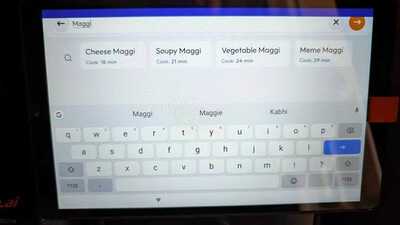
Noise levels are noticeable so whenever we were cooking, we have to raise our voice to make ourselves audible to the other person in the kitchen.
Who Upliance 2.0 actually serves
The Upliance 2.0 makes practical sense for specific categories of people, which include busy professionals who lack time for traditional cooking; people who avoid cooking—either due to lack of confidence, disinterest, or genuine anxiety; and finally, anyone seeking stress-free weekday meals without relying on external coaching.

Furthermore, there is also a category of people who should avoid this device. These include cooking enthusiasts and purists who value the unpredictability, intuition and hands-on artistry of cooking; anyone expecting a full kitchen replacement will be disappointed and those who enjoy cooking as an activity.
Verdict
The Upliance 2.0 is a solid, practical tool that does what it claims reasonably well. It's not a gimmick but it’s not a kitchen replacement either. For people who hate cooking or lack confidence in the kitchen, it meaningfully improves the cooking experience by reducing stress and even helps them learn basic dishes. The device has limitations. It sticks food to the bottom of the jar; it doesn't fully replicate high-flame cooking.
Within its intended scope it works fine. If you cook primarily out of necessity rather than pleasure, if you lack cooking confidence, or if you're pressed for time and want to reduce active kitchen involvement, this device deserves serious consideration.
Modern life presents a genuine cooking problem, at least for some. Busy professionals struggle to prepare meals beyond basic options; people without cooking experience hesitate to attempt restaurant-quality dishes, uncertain about technique and timing while many avoid cooking altogether because the learning curve feels steep and the risk of failure feels high. In such situations, ordering food becomes the default option which comes with its own financial and health ‘problems’.
The Upliance 2.0 addresses this gap directly. It's designed for people who want to cook daily food or typically found in restaurants—biryani, paneer curries, pasta risotto, pav bhaji—without the years of practice those dishes traditionally require. It also removes the expertise barrier, handles the technical complexity, and is claimed to produce results that approximate what trained cooks achieve.
However, after testing this AI-assisted cooking device through various recipes, the reality is a bit more nuanced than the marketing suggests. Here’s what we found.
Design and setup
From a design perspective, the Upliance 2.0 makes a strong first impression. The device is sleek and minimal, occupying reasonable counter space without dominating the kitchen. The 10-inch touchscreen is responsive and bright, and the overall aesthetic feels intentional rather than cluttered.
The design is not only functional but also innovative. The blender serves multiple purposes: It’s a chopper with heating and automation capabilities. The setup is straightforward—the touchscreen guides you through initial configuration. The device connects to WiFi for recipe downloads and app-based controls.
The Upliance 2.0's primary strength lies in its guided cooking system. Recipes adjust automatically for portion size that you set (one or four people). The device handles several key cooking functions: fast heating, automatic stirring, integrated blending and chopping capabilities. You load ingredients, and the device manages timing and temperature adjustments.
Performance
We tested the machine by making multiple recipes, including making coffee, maggi and a paneer dish. The machine also has a scale that is responsive and sophisticated. For example, we were able to measure 9 grams of coffee powder for 2 cups of coffee.
The system acts as a virtual teacher, precisely detailing the required quantities of ingredients like onions, capsicum, cheese, and cheese slices, necessary for the cheese maggi. It then guided us in a step-by-step process, guaranteeing all necessary components are included. We could find hundreds of dishes and their variants on the device and can even add some via app.
The automatic functions genuinely do reduce active involvement. Traditional cooking often requires constant monitoring—stirring to prevent burning, checking doneness, adjusting heat. Fine chopping of onions, stirring and heating are all taken care of.
The food tasted like actual food prepared by someone with basic competence. It did not feel like a meal prepared by an algorithm or just merely edible approximation. The reviewer’s father tasted the coffee and felt it was a bit too sweet for him. Similarly, the reviewer’s brother did not find the maggi spicy enough for his liking.
Hence, the device also doesn't fully replicate high-flame cooking's flavour profile. We are not saying that the flavour is not good, but it's noticeably different from traditional cooking methods.
Real-world limitations
Food sticking to the bottom of the jar is an issue with some dishes. The rinse cycle helps but doesn't clean it like we do with hands or dishwashers, which means manual scraping is often necessary. More fundamentally, the Upliance 2.0 is not a kitchen replacement. It functions as a specialised cooking vessel—roughly equivalent to a pressure cooker or traditional kadhai—rather than a standalone solution.
For example, we cannot make rotis using only this device or reheat food effectively. It only makes food for up to 4 people, which is a limitation. Sometimes, a dish needs heat techniques that require traditional stovetop cooking, which the device cannot do. Anyone expecting this device to eliminate their need for a gas stove or conventional cookware will be disappointed.
Noise levels are noticeable so whenever we were cooking, we have to raise our voice to make ourselves audible to the other person in the kitchen.
Who Upliance 2.0 actually serves
The Upliance 2.0 makes practical sense for specific categories of people, which include busy professionals who lack time for traditional cooking; people who avoid cooking—either due to lack of confidence, disinterest, or genuine anxiety; and finally, anyone seeking stress-free weekday meals without relying on external coaching.
Furthermore, there is also a category of people who should avoid this device. These include cooking enthusiasts and purists who value the unpredictability, intuition and hands-on artistry of cooking; anyone expecting a full kitchen replacement will be disappointed and those who enjoy cooking as an activity.
Verdict
The Upliance 2.0 is a solid, practical tool that does what it claims reasonably well. It's not a gimmick but it’s not a kitchen replacement either. For people who hate cooking or lack confidence in the kitchen, it meaningfully improves the cooking experience by reducing stress and even helps them learn basic dishes. The device has limitations. It sticks food to the bottom of the jar; it doesn't fully replicate high-flame cooking.
Within its intended scope it works fine. If you cook primarily out of necessity rather than pleasure, if you lack cooking confidence, or if you're pressed for time and want to reduce active kitchen involvement, this device deserves serious consideration.
Next Story